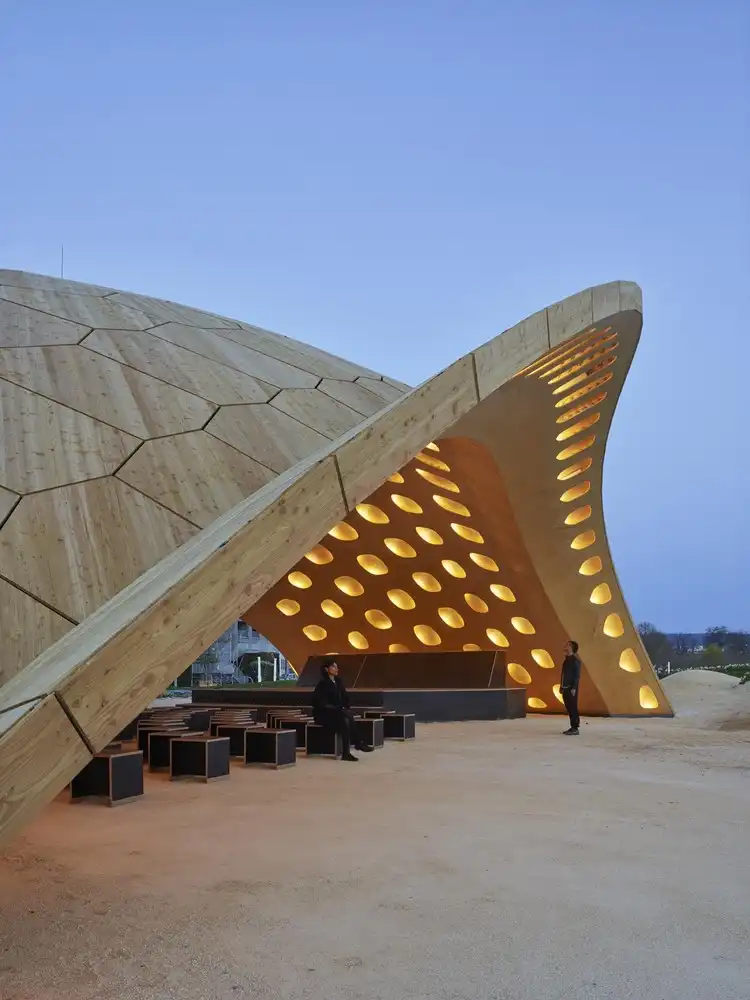The Elastic Architecture studio workshop aims to introduce the potential of material-driven deformation behavior for architectural applications.

Despite the common perception of our built environment as something static and permanent, architects and engineers have been seeking reconfiguration and adaptation throughout the history of architecture. This led to many concepts and technical solutions that might facilitate architectural applications to adapt to changing spatial and structural demands and environmental influences.
Most technical movable applications are utilized by so-called rigid-body mechanisms, where hinges join rigid elements with specified degrees of freedom. In contrast to this clear functional distinction between stiff elements and joints, the investigation of biological systems reveals numerous motion principles based on the elastic deformation of fibrous materials, known as Elastic mechanisms. These Elastic mechanisms use the interrelation between form, structure, and material – inherent to biological systems – to achieve great variation of motion possibilities while keeping the mechanical complexity comparatively low. Besides performative aspects, the investigation of biological Elastic mechanisms offers interesting design potentials. Mechanisms based on elastic deformation often only need a small actuation impulse to actuate a complex three-dimensional output motion – not obvious but still plausible to the observer, an aesthetic value of complex biological motion.
Bio-inspired Elastic architectural applications have been realized in projects such as the One Ocean Pavilion (SOMA Architects, Knippers Helbig Advanced Engineering), the bio-inspired Flectofold façade shading device (ITKE/ ITFT, University of Stuttgart) or the ITECH Research Demonstrator 2018-19 (ICD/ITKE/ITFT, University of Stuttgart). The mentioned examples use the elasticity of the used materials – mainly fiber reinforces polymers (FRP) – in combination with geometrical articulation to adapt their shape through elastic deformation to distinct functional demands, without mechanical hinges or the geometrical constraints of linear translation axis. In contrast to those actively controlled responsive systems, the Urbach Tower (ICD/ITKE, University of Stuttgart) uses the moisture-dependent shrinking behavior of wood for self-shaping of curved wood panels to overcome complex and energy-intensive mechanical forming processes.
The workshop aims to introduce the potentials of material-driven deformation behavior for architectural applications. Thus, various simulation and form-finding strategies will be introduced to design with elastic deformation and motion. The workshop participants will work in small groups (3-4 students) on a small design task to exercise the taught skills. The workshop will be integrated within parts of the ITECH Seminar “Form and Structure”, which provides an introduction into various structural systems, simulation strategies, and their potential for architectural design.
Session 1
Opening Lecture by Prof.-Dr. Jan Knippers (Introduction lecture to elastic deformation in an architectural context)
Karamba Workshop
Session 2
Workshop Q&A
Session 3
Sofistik Workshop
Workshop Q&A
Session 4
Workshop Q&A
Session 5
Submission Assignment
No comments found.